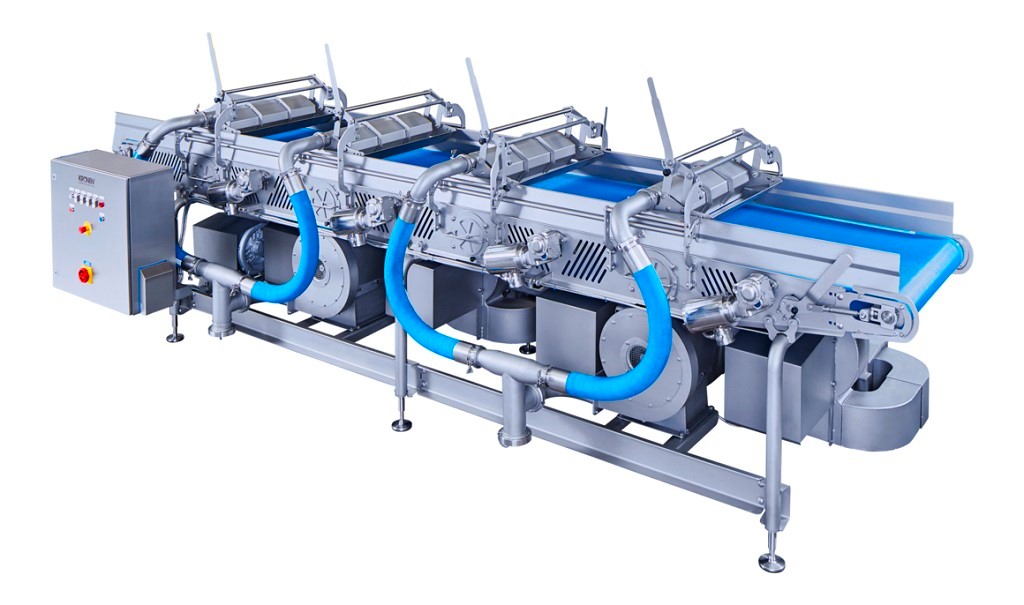The Ultimate Guide to Mechanical Dewatering: Techniques and Technologies

Dewatering separates water from a slurry or solid material, often by pumping or evaporation. It allows for more accessible transport and can significantly reduce the cost of handling, disposal, or treatment.
Screw Presses
Screw presses use a slowly rotating Archimedean screw inside a perforated or slotted cylinder that compresses sludge against a screen (or filter) to separate liquid and solids. The dewatered cake can then be disposed of or collected for further processing.
Unlike centrifuges, screw presses operate at lower rotational speeds and require less energy. They also produce less noise and vibration and are less susceptible to clogging, making them ideal for wastewater treatment plants.
Liquid sludge is pumped from the inlet chamber through a V-notch weir into the flocculation chamber, where the polymer is added to aggregate/flocculate sludge solids and generate flocs that flow via an overflow through the screw, where dewatering occurs. The process takes longer than other mechanical dewatering methods, and the sludge feed rate should be controlled to optimize performance and ensure proper operation. Regular screen cleaning and inspection are necessary to avoid clogging, and lubricating moving parts lowers friction and prolongs the life of the equipment.
Vacuum Dewatering
Vacuum dewatering is a construction technique that uses vacuum pressure to remove water from concrete structures, such as warehouse floors and civil roads. This reduces the water/cement ratio and improves the concrete’s strength and durability.
Dewatering can be used to prepare a construction site for excavations or lower the on-site water table. Additionally, it can strengthen soils’ ability to support loads and shield building supplies from flooding.
By lowering the water table, dewatering can help prevent soil liquefaction, which can damage foundations and other infrastructure. It can also reduce erosion risk by removing water from unstable soils. Improving work conditions can make it safer and easier to access areas of a construction project that may otherwise be inaccessible.
Thermal Drying
In dewatering, thermal drying evaporates water from sludge (residual sludge from wastewater treatment plants and on-site sanitation systems such as pit latrines). This allows the sludge to be transported more easily, stored less expensively, and eventually burned or buried as fertilizer.
The concept of heating a wet item to dry it is very familiar, as the common practice of placing an ice cube in your hand will quickly prove. Heat is generated by vibrations, warming the more excellent ice molecules to speed up its melting and evaporation.
This same principle is applied to sludge drying with the requirement that any significant energy consumed must be renewable. The energy can be supplied from various sources, including waste heat reclamation, natural gas or other fuel combustion, or direct electrical power conversion. It is also essential to do the drying process at a low temperature to avoid oxidation of any organic material in the sludge.
Dredge Dewatering
Dredging is a common practice used to remove sediment from waterways. Large harbors or other industrial areas typically require dredging to maintain depth and allow commercial vessels to navigate the waters.
The dredged material is typically taken to a staging area for further processing. This process often includes dewatering and one or more types of treatment to prepare the dredged material for disposal or beneficial reuse. Treatment options include physical, biological, and chemical methods.
Once the dredged material is dry, it can be used for various purposes, such as fill, topsoil, landfill cover, and more. Many companies also use dredged material to replenish beaches, which can help attract tourists and businesses to beach towns.
For the most economical option, passive dewatering can reduce the amount of water in dredged material by allowing the sediment particles to separate in settling basins or tanks. The water on the surface can then be drained or evaporated to leave behind a dry solid slurry.
